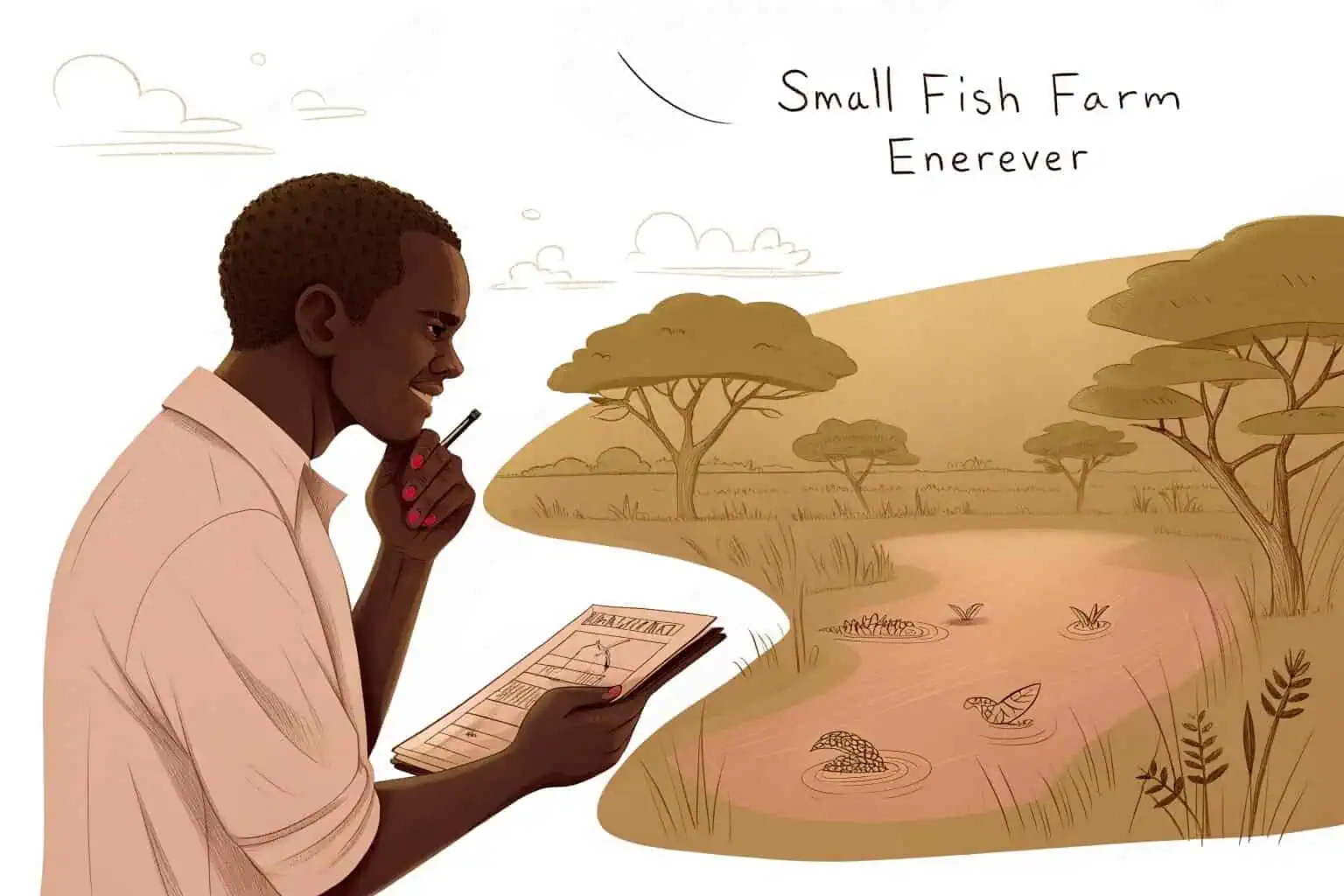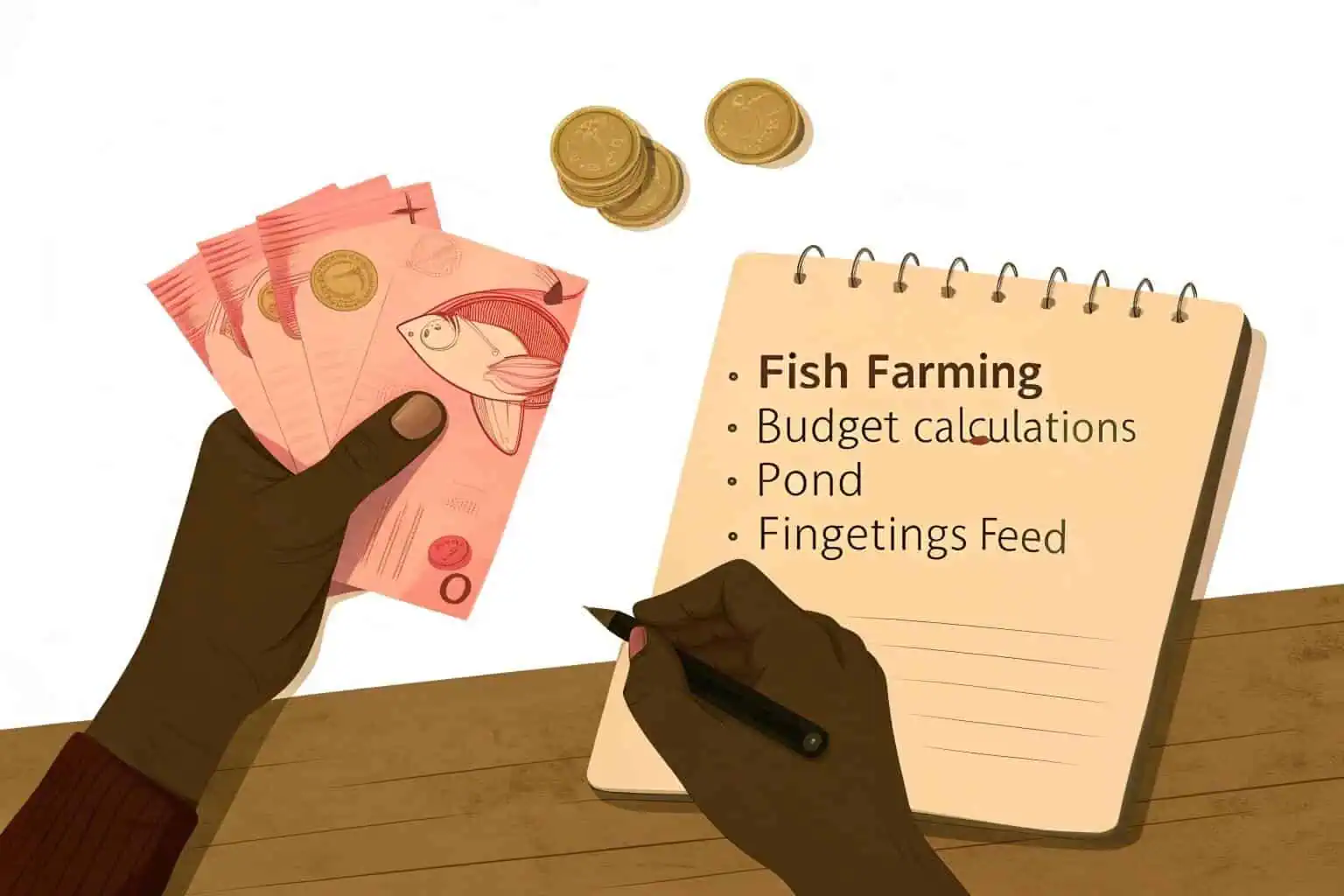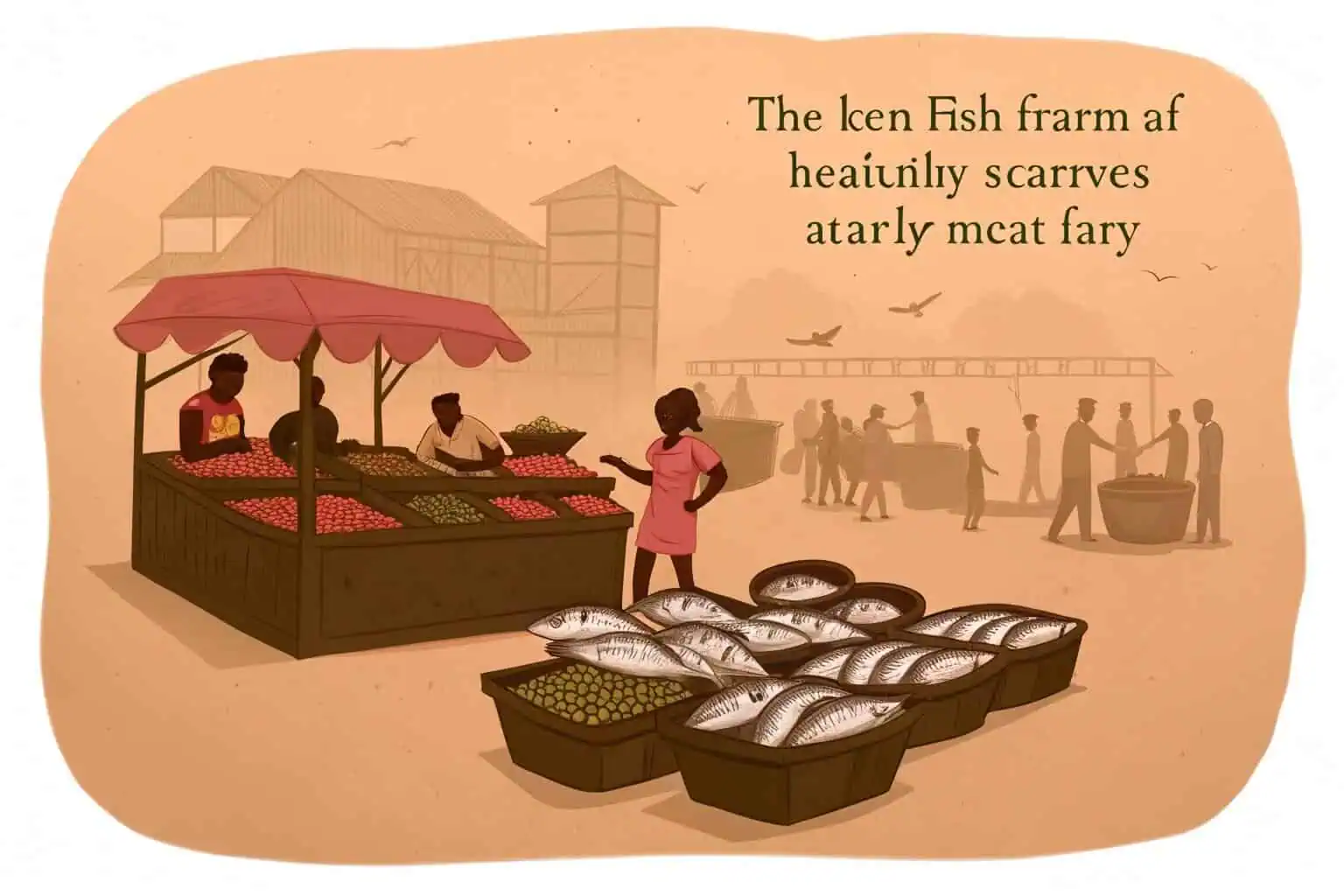How to Start Fish Farming in Kenya?
Dreaming of fish farming in Kenya but unsure where to start? Costs and complexities can seem overwhelming for beginners. Let's explore how to turn your fish farming dream into reality.
Starting fish farming in Kenya involves planning your budget, choosing the right pond and fish, and understanding the market. With careful steps, it's a viable business.

Embarking on this journey requires knowledge and preparation. Let's break down the essential questions you might have to guide you through the process.
How much do I need to start fish farming in Kenya?
Worried about the initial investment for fish farming? Startup costs can be a major hurdle for aspiring farmers. Let's clarify the key expenses you'll encounter.
Starting fish farming in Kenya requires capital for pond construction, fingerlings, quality feed, and basic equipment. Initial estimates can range, but careful planning helps manage costs effectively.

Understanding the financial commitment1 is crucial. As someone who's navigated this, I can tell you costs vary. Your scale, chosen system, and fish species significantly impact the budget. I've seen many people start with great enthusiasm, but without a clear financial plan, things can get tough. My own journey began with a modest setup, and I learned quickly that every shilling counts.
Key Initial Investments
The primary costs usually involve setting up the physical farm. This includes land preparation if you don't have a suitable site, and then the pond itself. For me, finding the right spot with access to water was the first challenge. After that, you'll need to purchase your initial stock of fingerlings2. I remember the excitement of bringing my first batch of tiny fish to the farm.
Ongoing Operational Costs
Beyond setup, daily or monthly expenses are vital. Feed is a big one, often more than half your running costs. I constantly look for ways to get good quality feed3 at reasonable prices. Then there's labor, water management (testing kits, any pumping costs), and potential veterinary care. Keeping detailed records of these ongoing costs helped me understand my profit margins better.
Budgeting Wisely
I learned early on to create a detailed budget. Track every shilling. Look for ways to be efficient, like sourcing local materials for pond construction4 or exploring alternative feed ingredients5 if feasible and safe for your fish. For instance, I experimented with some locally available supplements after consulting with experts, which helped manage feed costs to some extent.
| Expense Category | Estimated Cost Range (KES) | Notes |
|---|---|---|
| Pond Construction | 50,000 - 500,000+ | Depends on type (earthen, liner, tank), size, and materials. |
| Fingerlings | 5 - 15 per piece | Price varies by species (Tilapia, Catfish) and supplier. |
| Fish Feed (per cycle) | 30,000 - 200,000+ | Major ongoing cost; depends on fish type, density, and growth period. |
| Basic Equipment | 10,000 - 50,000 | Nets, buckets, water testing kits, weighing scale. |
| Licenses & Permits | 1,000 - 5,000 | Check local county government requirements. |
| Total Initial Range | ~96,000 - 770,000+ | This is a broad estimate; detailed local research is key. |
Remember, these are general figures. I always advise new farmers to do thorough local research6. Talk to suppliers, visit other farms, and get current quotes. Starting small and scaling up, as I did, is often a smart approach. It allows you to learn and adapt without risking too much capital at once.
How much does it cost to start a fish farm?
Confused about the total financial outlay for a fish farm? Hidden costs can derail even the best-laid plans. Let's detail the components of fish farm startup expenses.
The cost to start a fish farm in Kenya includes pond setup, fish stock, feed, labor, and licensing. A small-scale farm might begin with a few hundred thousand shillings, but this varies.

When I first started, I tried to break down every single cost. It's more than just the pond and the fish. Think about the entire operation7 from day one until your first harvest. I made a checklist, and it was surprisingly long! It’s easy to overlook small things that add up.
Infrastructure Costs
This is often the biggest upfront investment. It's not just digging a hole; it's creating a suitable environment. This includes the pond itself, any water inlet/outlet systems, and perhaps fencing for security. I learned the hard way that good fencing is important to keep predators out. If you're using tanks like the ones we at Bancy Solutions can provide, such as our durable PVC liner tanks8 with galvanized frames, that's part of this category. These tanks offer flexibility and can be a great option, especially if land is limited or soil isn't ideal for earthen ponds.
Stocking and Feeding
Once your infrastructure is ready, you need fish! The cost of fingerlings9 varies. Then comes feed – as I mentioned, this is a significant recurring expense. I always tell people, don't skimp on quality feed because it directly impacts fish growth and health, but do shop around for the best prices from reliable suppliers. Building a good relationship with a feed supplier can sometimes lead to better deals.
Operational Overheads
These are the day-to-day running costs. Labor (if you hire help), water quality management (testing kits, any treatments), electricity or fuel for pumps if needed, and general maintenance. Also, factor in costs for permits and any necessary training. I found attending workshops and talking to experienced farmers incredibly helpful in my early days. Don't forget transport costs for getting feed or taking fish to market.
| Cost Component | Details | Importance | Potential Savings |
|---|---|---|---|
| Pond/Tank System | Earthen, liner ponds, concrete tanks, or modern collapsible tanks. | High | DIY for earthen ponds (if skilled), choose cost-effective but durable tank materials. |
| Water Source & Management10 | Borehole, river, rainwater harvesting. Pumps, pipes, testing kits. | High | Gravity-fed systems if topography allows, regular water quality checks to prevent costly issues. |
| Fingerlings | Quality, disease-free stock from reputable hatcheries. | High | Buy in bulk (if manageable and you have space), choose species suited to your local market and climate. |
| Fish Feed | Commercial pellets, or explore supplementary local feed sources carefully. | High | Good feeding practices to reduce waste, explore local ingredient options only after thorough research and expert advice. |
| Labor11 | Farm management, feeding, harvesting, security. | Medium | Start small and manage yourself initially, train family members if they are involved. |
| Licenses & Permits | County government, NEMA (for larger projects). | Medium | Ensure compliance from the start to avoid fines or operational disruptions. |
| Contingency Fund | For unexpected expenses, disease outbreaks, equipment repairs. | Medium | Set aside 10-15% of total startup costs. This saved me during an unexpected dry spell. |
Starting my farm, I learned that meticulous planning for each of these components is key. It helps avoid surprises and ensures you have a realistic financial picture before you even buy your first fish.
How much does it cost to build a fish pond in Kenya?
Wondering about the specific expense of constructing a fish pond? Pond building costs can vary wildly, causing confusion. Let's examine the factors influencing fish pond construction prices.
Building a fish pond in Kenya can cost from KES 50,000 for a small earthen pond to over KES 500,000 for larger, lined, or concrete ponds. Material, size, and labor are key determinants.

Ah, the pond itself! This was one of my first big projects and a significant part of my initial budget12. The cost isn't fixed; it really depends on what you're building and the local conditions13. I explored several options before settling on what worked for my land and budget.
Earthen Ponds
These are often the cheapest to excavate, especially if you have suitable clay soil that holds water well. The main cost is labor for digging14, whether manual or using machinery like an excavator. I've seen some successful small farms start this way. However, they can have issues with seepage if not properly constructed, and predators like birds or otters can be a concern if the pond isn't well-protected. Maintenance to prevent erosion of the banks is also something to consider.
Lined Ponds
Using a pond liner15 (like heavy-duty PVC or HDPE) adds to the cost but offers better water retention and can be built on various soil types, even sandy ones. I've seen many successful farms use these, and it's a popular option for consistency. The liner material and its installation are the main expenses here. At Bancy, we understand the importance of durable liners for such applications, as a good quality liner can last for many years if properly cared for.
Tank Systems
Then there are tank-based systems. These can range from traditional concrete tanks to more modern options like our Bancy collapsible fish tanks16. These include galvanized pipe fish tanks, galvanized sheet fish tanks, or plastic frame fish tanks. While the initial cost per unit might seem higher than a simple earthen pond, they offer advantages like easier management of water quality, better disease control because you can isolate tanks, and portability for some models. The cost will depend on the size and material of the tank. For instance, our galvanized sheet tanks17 are robust and offer longevity, making them a good long-term investment for serious farmers. I've seen these used effectively for intensive farming.
| Pond Type | Key Cost Factors | Pros | Cons |
|---|---|---|---|
| Earthen Pond | Excavation (manual/machine), soil type, size, depth, labor rates. | Lower initial cost if soil is suitable and labor is affordable. | Seepage risk, predator risk, harder to manage water quality, can require more land. |
| Liner Pond | Excavation, liner material (PVC/HDPE quality and thickness), installation labor, underlayment. | Good water retention, suitable for various soils, better control over water volume. | Higher material cost than earthen, liner can be punctured if not handled carefully. |
| Concrete Tank | Materials (cement, sand, ballast, rebar), labor, formwork, curing time. | Durable, long-lasting, good control, secure. | High initial cost, permanent structure, can crack if not built well or on unstable ground. |
| Collapsible/Frame Tanks (e.g., Bancy tanks) | Tank material (PVC, galvanized steel), frame type, size, brand/supplier. | Easy and quick setup, portable (some models), good control, scalable, can be used intensively. | Material cost per unit can be higher than basic earthen pond18s, lifespan depends on material quality and care. |
When I was deciding, I weighed the pros and cons against my budget and long-term plans. For many starting out, a well-constructed liner pond or a set of durable collapsible tanks can be a very good investment, offering a balance between cost and manageability. It’s important to get quotes from local contractors and suppliers.
Which fish farming is most profitable?
Aiming for maximum returns from your fish farming venture? Choosing the wrong fish can lead to lower profits or difficulty selling. Let's discuss which fish species offer better profitability in Kenya.
Tilapia is widely farmed and profitable in Kenya due to its hardiness, good growth rate, and strong market demand. Catfish can also be very profitable, often fetching higher prices, especially in specific markets.

Profitability – that's the goal for any business, right? From my experience and observations in the Kenyan market, a few factors determine this. It's not just about the fish that sells for the highest price per kilo, but also about ease of rearing, growth rate, feed conversion ratio (how much feed it takes to produce 1kg of fish), and, crucially, market availability and demand19. I learned that growing a fish no one wants to buy is a quick way to lose money.
Tilapia Farming
Tilapia is a popular choice in Kenya, and for good reason. It's relatively hardy, meaning it can tolerate a range of water conditions, and adapts well to various farming systems, from earthen ponds to tanks. Crucially, there's a consistent market demand for Tilapia across the country. The operational costs can be managed, and they have a decent growth rate20, reaching market size in about 6-8 months. I started with Tilapia, and it provided a steady income stream that helped me grow my farm.
Catfish Farming
Catfish (especially the African Catfish, Clarias gariepinus21) is another strong contender for profitability. They are air-breathers, meaning they can tolerate poorer water quality and lower dissolved oxygen levels than Tilapia. They also have a very good feed conversion ratio and can grow very quickly in warm water. I've noticed that in some regions and with certain buyers (like hotels, restaurants, or specific urban markets), catfish can command a premium price, leading to higher profit margins. However, their market might be more niche in some areas compared to the widespread appeal of Tilapia. Some people also prefer the taste of Tilapia.
Other Species
While Tilapia and Catfish are dominant in Kenyan aquaculture, some farmers explore other species. Ornamental fish farming can be lucrative but it's a very different market requiring specialized knowledge and connections. Trout farming is possible in cooler highland areas of Kenya, but it requires very specific cold-water conditions and the setup costs can be high. Common Carp is another option but may have lower market preference compared to Tilapia or Catfish.
| Fish Species | Growth Rate | Market Demand | Price Point | Management Difficulty | Feed Cost | Overall Profit Potential (My View) |
|---|---|---|---|---|---|---|
| Tilapia22 | Moderate (6-8 months) | High & Consistent | Moderate | Low to Moderate | Moderate | Good, consistent returns due to strong market. |
| Catfish23 | Fast (4-6 months) | Moderate-High (can be niche) | Moderate-High | Low to Moderate (hardy) | Moderate | Potentially higher margins, but market research is crucial. |
| Ornamental Fish24 | Varies | Niche (export/hobbyist) | High | Moderate to High | Varies | High, but requires specialized skills and market access. |
| Trout | Moderate | Niche (Highlands, high-end market) | High | High (requires cold, clean water) | High | Good in specific regions, high setup and operational costs. |
My advice? Research your local market thoroughly. What are people buying? What prices are they willing to pay? Talk to fish traders, restaurants, and consumers. Sometimes, a slightly harder-to-raise fish with a strong niche market can be more profitable than an easy-to-raise fish with widespread but lower-priced demand. I've learned that diversifying, if you have the capacity and knowledge, can also be a good strategy to mitigate risks and tap into different market segments.
Conclusion
Starting fish farming in Kenya is a journey with rewarding potential. With careful planning, the right knowledge, and dedication, you can build a successful and profitable venture in this growing industry.
-
Exploring this resource will help you grasp the significance of financial commitment in planning and budgeting effectively. ↩
-
Finding reliable sources for fingerlings is essential for starting your fish farm on the right foot. ↩
-
Finding affordable sources for good quality feed can help reduce your overall costs and improve your livestock's health. ↩
-
Explore this link to learn effective techniques and materials for pond construction, ensuring a successful aquaculture venture. ↩
-
Discover innovative and cost-effective feed options that can enhance fish growth and reduce expenses in your farming operation. ↩
-
Gain insights on conducting thorough local research to make informed decisions in aquaculture, maximizing your success. ↩
-
Understanding the entire operation helps in planning and budgeting effectively for fish farming. ↩
-
Explore the advantages of PVC liner tanks, including durability and flexibility, which can enhance your pond setup. ↩
-
Exploring this link will help you find reliable suppliers for quality fingerlings, essential for your fish farming success. ↩
-
Effective water management is crucial for fish health and farm sustainability; explore expert insights to optimize your practices. ↩
-
Understanding labor management can significantly reduce costs and improve efficiency in your fish farming operations. ↩
-
Understanding the factors that affect an initial budget can help you plan better for your own projects. ↩
-
Exploring how local conditions impact costs can provide insights for your own construction planning. ↩
-
Understanding labor costs can help you budget effectively for excavation projects, ensuring you make informed decisions. ↩
-
Explore the advantages of pond liners for farming, including water retention and soil compatibility, to enhance your agricultural practices. ↩
-
Explore the advantages of collapsible fish tanks, including portability and ease of management, to enhance your aquaculture setup. ↩
-
Learn why galvanized sheet tanks are durable and long-lasting, making them a smart choice for serious farming operations. ↩
-
Discover the benefits and drawbacks of earthen ponds to make an informed decision for your aquaculture needs. ↩
-
Market availability and demand are critical for successful fish farming. Discover insights on how to align your production with market needs. ↩
-
Learn about the growth rate of Tilapia to optimize your farming practices and ensure timely harvesting for profit. ↩
-
Explore the advantages of farming African Catfish, including profitability and market demand, to enhance your aquaculture knowledge. ↩
-
Explore the advantages of Tilapia farming, including market demand and profitability, to make informed decisions. ↩
-
Understanding market trends for Catfish can help you identify opportunities and maximize profits in your farming venture. ↩
-
Learn the best practices for breeding Ornamental Fish, tapping into a lucrative niche market with specialized skills. ↩